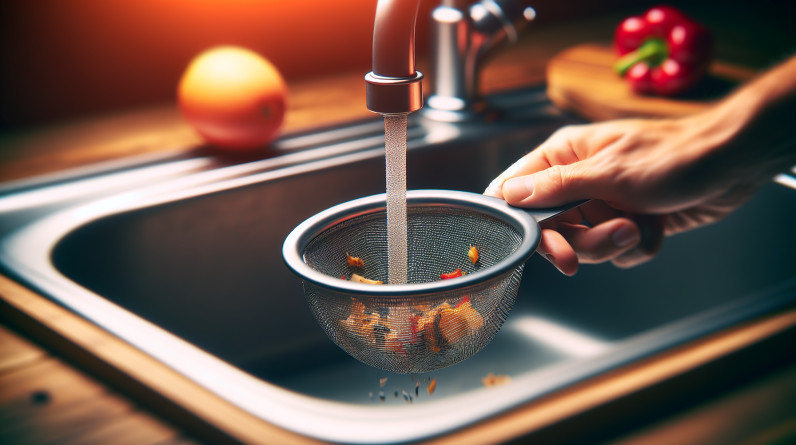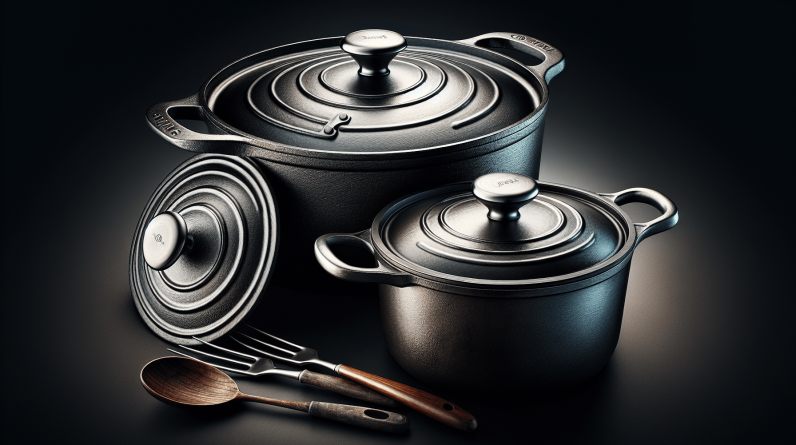Curiosity gets the best of us when it comes to exploring new techniques in the kitchen, especially when it involves healthy and homemade snacks. That’s where the food dehydrator comes into play, an essential tool for transforming fresh fruits, vegetables, and meats into tasty and long-lasting treats. But before embarking on this gastronomic adventure, it’s crucial to keep safety in mind. In this article, we will share the top safety tips to ensure a worry-free experience when using a food dehydrator. So let’s get started and have some fun while keeping our kitchen and ourselves safe!

General Safety Tips
Read and Follow the Instructions
When using a food dehydrator, it is essential to read and follow the manufacturer’s instructions. These instructions provide valuable information on how to assemble, operate, and maintain the dehydrator safely. Taking the time to familiarize yourself with the instructions will help you understand any potential hazards and ensure that you use the dehydrator correctly.
Inspect the Dehydrator
Before each use, it is crucial to inspect the dehydrator for any signs of damage or wear. Check the power cord for fraying or exposed wires and ensure that all parts are in proper working condition. If you notice any issues, do not use the dehydrator and contact the manufacturer for repairs or replacement. Regular inspections can help prevent accidents and ensure the safety of both you and your food.
Use the Dehydrator in a Well-Ventilated Area
Using a food dehydrator requires a constant flow of air to remove moisture from the food. It is essential to operate the dehydrator in a well-ventilated area to prevent the buildup of heat and humidity. Good airflow not only improves the efficiency of the dehydrator but also reduces the risk of overheating. If necessary, consider using a fan or opening windows to enhance ventilation during the dehydration process.
Food Preparation Safety
Choose Fresh and High-Quality Ingredients
When preparing food for dehydration, always select fresh and high-quality ingredients. Using spoiled or contaminated food can lead to foodborne illnesses and compromise your overall safety. Inspect the produce for any signs of rotting, mold, or other abnormalities. Additionally, wash fruits and vegetables thoroughly before placing them in the dehydrator to remove any dirt or pesticide residue.
Prevent Cross-Contamination
To ensure food safety, it is vital to prevent cross-contamination during the preparation phase. Cross-contamination occurs when bacteria or other harmful microorganisms from one food item are transferred to another. To avoid this, use separate cutting boards and utensils for different types of food. Wash your hands thoroughly after handling raw meat or poultry, and clean all surfaces and utensils with hot, soapy water before moving on to the next ingredient.
Clean the Food Thoroughly
Properly cleaning the food before dehydration is an essential step in food safety. Remove any dirt, debris, or pesticides by washing fruits and vegetables under cold running water. Use a scrub brush for produce with firm skin, such as potatoes or apples. For leafy greens, immerse them in a bowl of water and gently agitate to dislodge any hidden dirt. Taking the time to clean your food thoroughly minimizes the risk of ingesting harmful substances during the dehydration process.
Temperature and Timing Safety
Know the Recommended Temperatures
Different types of foods require specific temperatures for safe and effective dehydration. It is essential to familiarize yourself with the recommended temperature guidelines provided by the manufacturer or reputable sources. Setting the dehydrator at the correct temperature ensures that the food reaches the necessary heat levels to kill bacteria while preserving its flavor and texture. Remember to adjust the temperature settings according to the type of food you are dehydrating.
Avoid Overfilling the Dehydrator
Overfilling the dehydrator can lead to uneven drying and inadequate airflow, posing safety risks. It is essential to leave enough space between the food items to allow proper circulation of air. Overcrowding the trays can prevent the food from drying evenly and create pockets of moisture, which can promote the growth of harmful bacteria. By following the manufacturer’s guidelines on the recommended maximum capacity, you can ensure safe and effective dehydration.
Monitor and Adjust the Drying Time
Every food item requires a different amount of time to dehydrate fully. Monitoring the drying time is essential to avoid under or over-drying the food. Regularly check on the progress of your food by inspecting its texture and moisture content. Adjust the drying time accordingly to ensure that the food reaches the desired level of dryness without compromising its safety. Keeping a record of the drying times for different foods can help you establish a reliable routine for future dehydrations.
Electrical Safety
Inspect the Power Cord Regularly
The power cord is an integral part of the food dehydrator, and its condition directly affects its safety. Regularly inspect the power cord for any signs of fraying, cracking, or exposed wires. If you notice any damage, immediately stop using the dehydrator and have the cord repaired or replaced by a qualified professional. Avoid using extension cords or adapters as they can increase the risk of electrical hazards. It is best to plug the dehydrator directly into a properly grounded outlet.
Use the Correct Power Outlet
Ensure that you are using the correct power outlet for your food dehydrator. Different dehydrators have different power requirements, so it is essential to check the manufacturer’s specifications. Using an outlet with a lower or higher voltage than what is recommended can lead to electrical malfunctions, overheating, or even electrical shocks. Additionally, avoid using the same outlet for multiple high-powered appliances to prevent overloading the circuit and causing electrical hazards.
Avoid Wet Conditions
Water and electricity do not mix well and can be a dangerous combination. To ensure electrical safety, avoid using the dehydrator in wet conditions or near water sources. Keep the dehydrator away from sinks, faucets, or any other wet surfaces that can potentially cause a short circuit or electric shock. Accidental spills or splashes can also pose a risk, so it is essential to keep the dehydrator and its surroundings dry at all times.

Food Storage Safety
Cool Down Dehydrated Food Completely
After the dehydration process, it is crucial to allow your food to cool down completely before storing it. Placing hot or warm food in a sealed container can create condensation, which can lead to the growth of bacteria or molds. To cool down your dehydrated food, leave it on the trays or transfer it to a cooling rack for approximately one hour. Once the food has reached room temperature, you can proceed with the proper storage steps.
Store Food in Air-Tight Containers
To maintain the quality and safety of your dehydrated food, store it in air-tight containers. Proper containers help protect the food from moisture, air, and light, which can contribute to spoilage. Choose containers that are specifically designed for food storage, such as glass jars with sealing lids or food-grade plastic containers. Ensure that the containers are clean and dry before transferring the dehydrated food to prevent any contamination.
Label and Date the Containers
To stay organized and ensure freshness, it is essential to label and date your food storage containers. Proper labeling allows you to identify the contents and know when the food was dehydrated. This information is particularly useful when rotating your food supplies or when following specific dietary needs. Use waterproof labels or markers to avoid smudging or fading over time. By practicing good labeling habits, you can easily keep track of your dehydrated food inventory.
Cleaning and Maintenance Safety
Unplug the Dehydrator Before Cleaning
Before cleaning your dehydrator, always remember to unplug it from the power source. Unplugging ensures that the dehydrator is completely turned off, preventing any accidental activation of the heating elements or fan blades. Cleaning a dehydrator that is still connected to the power supply can lead to electric shock or other electrical hazards. Safety should always be a priority when handling electrical appliances.
Clean the Dehydrator Regularly
Regular cleaning is crucial to keep your food dehydrator functioning properly and safe to use. Remove any food debris, dust, or residue from the trays, heating elements, and fan blades. Use a damp cloth or sponge with mild soapy water to clean the interior and exterior surfaces of the dehydrator. Avoid using abrasive cleaners or scouring pads that can damage the dehydrator’s components. Allow all parts to dry completely before reassembling and storing the dehydrator.
Handle the Machine with Care
Food dehydrators can be heavy and contain delicate parts that require careful handling. When moving or transporting the dehydrator, always lift it with caution and have a firm grip. Avoid dragging or sliding the dehydrator, as this can cause damage to its components or affect its performance. When not in use, store the dehydrator in a safe and secure location, away from potential hazards, such as children, pets, or heavy objects that may accidentally fall on it.

Children and Pets Safety
Keep the Dehydrator Out of Reach
To ensure the safety of children and pets, keep the food dehydrator out of their reach. Dehydrators often have hot surfaces and removable trays that can pose a burn or choking hazard. Find a suitable location in your kitchen or pantry where the dehydrator can be securely placed, away from curious hands or paws. If necessary, install safety gates or barriers to restrict access to the area where the dehydrator is located.
Supervise Children
If children are present while the dehydrator is in use, proper supervision is crucial. Educate them about the potential dangers associated with the dehydrator, such as hot surfaces or sharp edges. Emphasize the importance of not touching the dehydrator or its components without adult supervision. Keeping a watchful eye on children can help prevent accidents and promote a safe environment for everyone.
Ensure Pets Cannot Access It
Just like children, it is essential to prevent pets from accessing the food dehydrator. Pets may have a natural curiosity and be attracted to the smells emanating from the dehydrator. However, their interaction with the dehydrator can lead to accidents or damage to the appliance. Place the dehydrator in an area where pets cannot reach or secure the space with gates or enclosures to keep them at a safe distance.
Fire Safety
Avoid Overheating the Dehydrator
Preventing the food dehydrator from overheating is crucial for fire safety. Overheating can lead to a rapid increase in temperature, potentially causing a fire. To avoid this, ensure that the dehydrator is operated within the recommended temperature range and never leave it unattended for extended periods. Regularly monitor the dehydrator while it is in use and promptly address any unusual smells or smoke.
Keep Flammable Materials Away
To reduce the risk of fire, it is essential to keep flammable materials away from the food dehydrator. These can include paper towels, oven mitts, wooden utensils, and any other items that can easily catch fire. Keep the area around the dehydrator clear of clutter and combustible materials. Maintaining a clean and orderly workspace minimizes the chances of accidental fires and ensures a safe environment for food dehydration.
Have a Fire Extinguisher Nearby
In case of a fire emergency, it is crucial to have a fire extinguisher readily available. Choose a fire extinguisher that is suitable for use in the kitchen and familiarize yourself with its operation. Store the fire extinguisher within easy reach of the dehydrator, ensuring that it is not obstructed by any objects. Furthermore, educate yourself and your household members on how to properly use a fire extinguisher and establish an emergency evacuation plan.
Health and Hygiene Safety
Wash Hands Before Handling Food
Maintaining proper hygiene is essential when using a food dehydrator. Before handling any food, make sure to wash your hands thoroughly with warm water and soap for at least 20 seconds. This helps remove any harmful bacteria or germs that may be present on your hands and reduces the risk of contamination during the preparation and dehydration process. Clean hands are the first step in ensuring the safety of your dehydrated food.
Avoid Touching Your Face While Handling
To prevent the transfer of bacteria or contaminants, avoid touching your face while handling food for dehydration. Touching your face, especially your mouth, nose, or eyes, can introduce harmful bacteria onto the food, compromising its safety and potentially causing foodborne illnesses. If you need to touch your face, wash your hands thoroughly before and after, or use disposable gloves when handling food to minimize the risk of contamination.
Store Dehydrated Food Properly
Proper storage of dehydrated food is crucial for maintaining its safety and quality. Store the dehydrated food in a cool, dry, and dark place, away from direct sunlight or heat sources. This helps prolong the shelf life of the food and prevents it from spoiling or becoming rancid. Ensure that the storage containers are airtight and properly labeled to avoid confusion and ensure that the food remains safe for consumption.
Experienced User Safety Tips
Experiment with Small Batches First
If you are an experienced user of a food dehydrator, it is still important to exercise caution and gradually explore new recipes or techniques. Start by experimenting with small batches of food before scaling up. This allows you to fine-tune your process without wasting a significant amount of food or risking potential food safety issues. Keep track of your results and make adjustments as needed to ensure consistent success.
Be Mindful of Strong Odors
Some foods, especially strongly flavored or aromatic ones, can leave lingering odors in the dehydrator. When planning to dehydrate highly fragrant ingredients, consider the impact it may have on subsequent batches. Certain smells can be absorbed by other foods, altering their taste or aroma. Evaluate the compatibility of different food items and, if necessary, clean the dehydrator thoroughly between uses to prevent cross-contamination of flavors.
Keep a Record of Recipes and Results
Maintaining a record of your recipes and results is a valuable practice for experienced users. Keeping track of the ingredients, temperatures, and drying times helps you replicate successful outcomes and avoid any safety concerns. Additionally, noting any issues or challenges encountered during the dehydration process enables you to troubleshoot and make improvements for future dehydrations. A logbook or digital record can serve as a helpful resource for enhancing your skills and ensuring safe food preparation.
In conclusion, using a food dehydrator can be a convenient and efficient way to preserve and enjoy a variety of foods. By following these safety tips, you can ensure that your dehydrator experience is not only effective but also safe for both you and your loved ones. Remember to read and follow the manufacturer’s instructions, choose fresh and high-quality ingredients, and maintain proper cleaning and maintenance practices. By prioritizing safety at every step, you can confidently enjoy the benefits of homemade dehydrated food.










